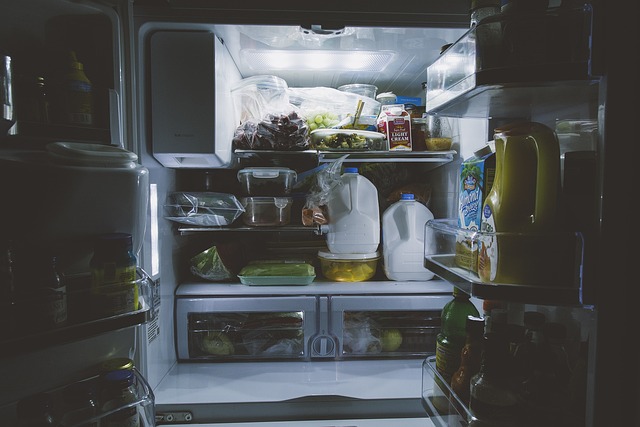finding freezer friendly solutions to keep food fresh for longer is essential. Whether you’re meal prepping, reducing food waste, or just looking for ways to save time and money, utilizing your freezer effectively can be a game-changer. By following freezer friendly storage techniques, you can extend the shelf life of your favorite ingredients without compromising quality.

Understanding freezer friendly methods ensures that your meals remain delicious and nutritious for extended periods. With the right approach, you can prevent freezer burn, maintain texture, and keep flavors intact. This guide will explore the best freezer friendly strategies to store your food longer, keeping your kitchen organized and efficient.
Choosing the Right Containers
Best Materials for Freezer Storage
Using the correct storage materials is a fundamental freezer friendly practice. Airtight containers, vacuum-sealed bags, and heavy-duty aluminum foil can help prevent freezer burn. Plastic containers with tight-fitting lids are excellent for soups and stews, while glass containers are a great option for keeping leftovers fresh.
Another freezer friendly storage option is silicone bags, which are reusable and eco-friendly. These bags help retain the texture and taste of your food while minimizing waste. Choosing high-quality materials for freezing ensures that your food remains safe and delicious.
Proper Labeling Techniques
A freezer method includes proper labeling to track food freshness. Use waterproof labels to note the date of freezing and contents of each package. This helps you organize your freezer and ensures you use older food first, reducing waste.
Additionally, a freezer habit is to categorize foods into sections, making it easier to find what you need. Keeping an inventory list on your freezer door can help track frozen items and plan meals effectively.
Best Foods to Freeze
Meats and Seafood
Meats and seafood are some of the most freezer items when stored correctly. To maintain quality, wrap meats in plastic wrap before placing them in a freezer-safe bag. Removing excess air from bags prevents freezer burn and preserves taste.
For a freezer seafood storage method, freeze fish fillets in water or vacuum-seal them. This prevents the fillets from drying out and keeps them tasting fresh even after weeks in the freezer.
Fruits and Vegetables
A freezer friendly tip for fruits is to flash-freeze them before storing. Spread berries or sliced fruits on a baking sheet and freeze them individually before transferring them into bags. This prevents clumping and makes portioning easier.
Blanching vegetables before freezing is another freezer friendly technique. Boil vegetables briefly, then immediately cool them in ice water before freezing. This process preserves texture and color while maintaining nutrients.
Effective Freezing Techniques
Pre-Portioning Meals
Pre-portioning is a freezer friendly habit that saves time and minimizes food waste. Divide meals into single-serving portions before freezing, so you can quickly thaw only what you need. This is ideal for busy schedules and meal prepping.
Another freezer friendly approach is to freeze sauces, broths, and soups in ice cube trays. This allows you to use small amounts without defrosting an entire batch, providing flexibility in meal preparation.
Using the Right Freezing Temperatures
Maintaining the correct temperature is essential for a freezer friendly kitchen. Set your freezer at or below 0°F (-18°C) to ensure food remains safe for long-term storage. Investing in a freezer thermometer can help monitor temperature consistency.
A freezer friendly practice also includes avoiding overpacking your freezer. Air circulation is key to maintaining an even temperature, so arrange items efficiently for optimal freezing conditions.
Thawing and Reheating Tips
Safe Thawing Methods
Thawing food properly is just as important as freezing it. The most freezer friendly way to thaw food is in the refrigerator overnight. This slow process preserves texture and prevents bacterial growth.
For a quicker freezer friendly thawing method, use a cold water bath. Place sealed food in a bowl of cold water, changing the water every 30 minutes until thawed. Avoid leaving food at room temperature for too long, as this can promote bacterial growth.
Best Practices for Reheating
A freezer friendly reheating method ensures that your food remains delicious and safe. Reheat frozen meals in the oven or on the stovetop for the best results. Microwaving is convenient but may lead to uneven heating, so stir food occasionally.
To maintain a freezer friendly texture, add a splash of water to frozen pasta dishes or rice before reheating. This helps restore moisture and prevents dryness, making meals taste freshly cooked.
Conclusion
Adopting freezer friendly habits can significantly improve your food storage and meal planning. By using the right containers, selecting the best foods to freeze, and following proper freezing techniques, you can enjoy fresh and delicious meals anytime.
With freezer thawing and reheating methods, you ensure that every dish retains its original flavor and texture. Implement these smart freezer strategies today and experience the convenience of longer-lasting food storage!